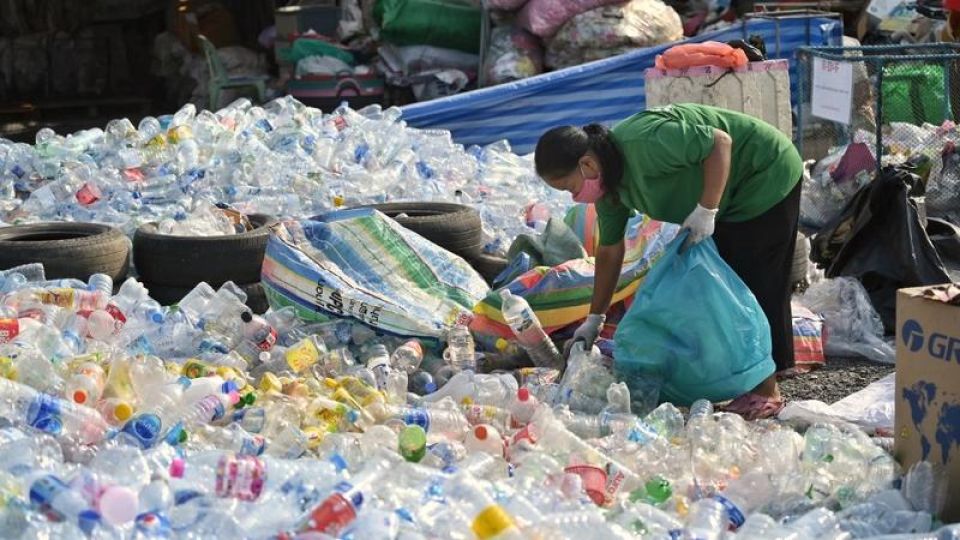November 25, 2021
As a result of rapid economic growth coupled with the lack of waste management infrastructure, East and Southeast Asian regions are recognized today as the biggest contributors of marine plastic pollution. This concern is underscored at the recently concluded COP26 in Glasgow, reflecting its urgency and relevance with the leading climate issue.
The situation has gotten worse since COVID-19 hit the world. The pandemic has changed people’s consumption behavior, as seen in the exponential increase in purchases of personal protective equipment such as surgical face masks, and the shift from dining in to takeaway and delivery for food consumption.
Merchants are sensitive to costs and sustainable containers can cost four to five times more than plastic packaging
From a business viewpoint, it can be a huge advantage to explore new business ideas, but from an environmental standpoint, the shift will result in an increasing amount of plastic waste.
To tackle the adverse effect, governments are advocating initiatives including the use of alternative materials and applying voluntary extended producer responsibility, or EPR, schemes. But in reality, businesses tend to “avoid” such voluntary initiatives.
During a public forum co-hosted by the Association of Southeast Asian Nations Secretariat and the Economic Research Institute for ASEAN and East Asia in June, Iris Chang, regional head of sustainability at Grab, one of Southeast Asia’s largest online service providers, said the company has a pilot program to replace plastic food containers with more sustainable materials which degrade more rapidly, such as paper. However, the transition has proven to be challenging.
Chang explained that there are four key aspects that make it difficult for food and beverage merchants to adopt more eco-friendly packaging.
First is price, as merchants are sensitive to costs and sustainable containers can cost four to five times more than plastic packaging. Second is design, as many Asian cuisines are covered with sauce and need watertight food delivery boxes.
Third is the lack of standards for genuinely eco-friendly containers which allows for “greenwashing”, causing restaurant owners to be unsure which materials are better than plastic. And fourth is the absence of regulatory requirements. Restaurant owners can be less motivated to switch their packaging type if it is not mandatory.
Furthermore, a report published by the Changing Markets Foundation revealed that many big businesses have lobbied for these voluntary initiatives as a tactic to delay and derail progressive legislation, while distracting consumers and governments with empty promises and false solutions.
Giving the option to voluntarily adopt eco-friendly business practices is no longer enough. There should be structural incentives for both the retailers and consumers to “pay more, do more” for genuinely eco-friendly packaging. At the same time, disincentives should be applied for the noncompliant parties.
Tommy Tjiptadjaja, co-founder and CEO of Indonesian green tech social enterprise Greenhope, at the same public forum, affirmed that while entrepreneurs and innovators are developing new methods and technologies, governments must work in parallel to provide a holistic and contextual policy framework as well as a roadmap that considers stakeholders’ inputs, incentives, and disincentives.
According to Tjiptadjaja, environmentally conscious entrepreneurs should not be left to their own devices and instead should be assured that the government is working alongside them.
Government can offer incentives for businesses who participate in positive business practices.
At the forum, Kentaro Inukai, president of Pana-Chemical, a provider of EPS (expanded polystyrene, commonly known as Styrofoam) recycling systems in Japan, explained that since EPS disposal is costly in Japan and illegal dumping results in costly penalties, Japanese businesses are motivated to invest in adequate machinery for their recycling, which can minimize the cost for plastic waste disposal.
To further promote this trend and encourage companies to purchase recycling machinery, governments can offer incentives, including subsidies for the acquisition of such equipment, argued Inukai.
From the consumer side, Supatchaya Techachoochert, co-founder of Refill Station, the first bulk store in Thailand, has witnessed improvements in public awareness of plastic pollution among Thai society compared to half a decade ago, where such understanding was dominated by the expatriate community.
To create momentum for a more sustainable business environment, all stakeholders must be on the same page, and this includes the consumers’ mindset, she said.
In conjunction with the incentives and disincentives towards the business sectors, education and raising awareness is also crucial to change the way consumers choose their suppliers.
Offering rewards in the form of discounts, cashback, or special gifts could see this sustainable mindset further translate into actual practice.
Such mechanisms can progressively lay the foundation for mandatory initiatives down the line. Well-designed mandatory EPR schemes under progressive legislation could be developed with transparent modulated fees, a polluter-pays principle and reduction targets, and funding for better alternative materials.
The private sector across the region has initiated positive business practices. However, none of them offers a one-size-fits-all solution. Understanding their strengths and weaknesses as well as informing the policy makers of the initiatives that can be effectively implemented in the local context is key.
The pandemic has accelerated the rate by which we generate plastic wastes, and we are under increasing pressure to find a holistic solution. Failure to act fast will risk hindering the regions’ efforts in combating marine plastic pollution.


